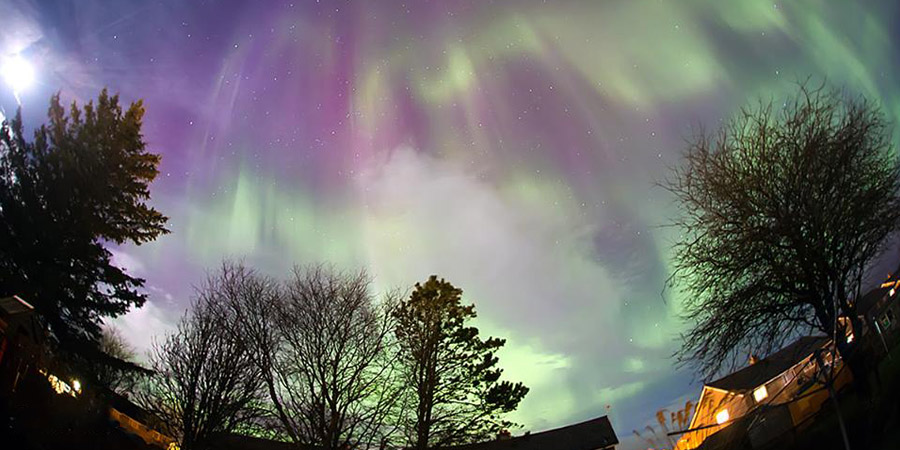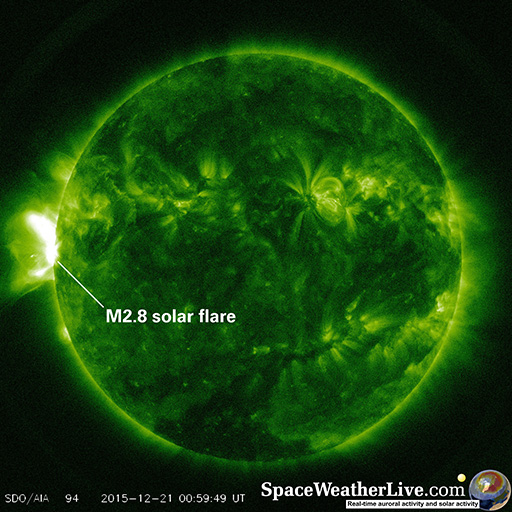Geomagnetic storm continues, M-class flare
Monday, 21 December 2015 01:44 UTC

The strength of the IMF remains at moderately high levels with a steady southward directed IMF (Bz) around -16nT. This caused a significant geomagnetic response during the European evening hours where the USAF Wing Kp reported strong G3 geomagnetic storm conditions and NOAA reported moderate G2 geomagnetic storm conditions. Aurora displays were reported as far south as the Netherlands and northern Scotland even had overhead aurora! A webcam in Hungary even managed to capture some faint aurora!
The solar wind/IMF stats as measured by ACE remain very favorable for further auroral outbreaks and we remain at the moderate G2 geomagnetic storm level according to the NOAA SWPC. We are now in the core of this coronal mass ejection and this is often associated with a very steady orientation of the IMF as we see now.
The following locations (and north of that of course) will have a chance to see aurora towards their horizon in the hours ahead during favorable conditions: Portland (OR, USA) Boise (ID, USA) Casper (WY, USA) Lincoln (NE, USA) Indianapolis (IN, USA) Columbus (OH, USA) New York City (NY, USA)
Good luck and don't forget to follow the data live here on our website!
Header image: Aurora Borealis captured by Stewart Watt from northern Scotland. Originally posted in Aurora UK.
M-class solar flare
Finally some solar activity worth mentioning!
A new sunspot region now nearing the east limb just produced an M2.8 solar flare. This is the first M-class solar flare since 2015/11/09! It was this sunspot region that was also responsible for a massive far side blast just a few days ago.
Any resulting coronal mass ejection will not come towards Earth but there is for sure an interesting sunspot region hiding there behind the limb.

Thank you for reading this article! Did you have any trouble with the technical terms used in this article? Our help section is the place to be where you can find in-depth articles, a FAQ and a list with common abbreviations. Still puzzled? Just post on our forum where we will help you the best we can!
Latest news
Latest forum messages
Support SpaceWeatherLive.com!
A lot of people come to SpaceWeatherLive to follow the Sun's activity or if there is aurora to be seen, but with more traffic comes higher server costs. Consider a donation if you enjoy SpaceWeatherLive so we can keep the website online!

Space weather facts
| Last X-flare | 2025/01/04 | X1.85 |
| Last M-flare | 2025/01/22 | M1.3 |
| Last geomagnetic storm | 2025/01/04 | Kp5 (G1) |
| Spotless days | |
|---|---|
| Last spotless day | 2022/06/08 |
| Monthly mean Sunspot Number | |
|---|---|
| December 2024 | 154.5 +2 |
| January 2025 | 145.2 -9.3 |
| Last 30 days | 162 +43.1 |


